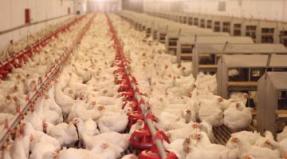What causes flatulence or bacterial overgrowth syndrome (SIBR)? Treatment of gut bacterial overgrowth syndrome Gut microbial overgrowth
Bacterial overgrowth syndrome (SIBO) in the small intestine is a pathology caused by an increased colonization of the small intestine mainly by fecal bacteria, and leading to multiple digestive disorders. This disease is, as a rule, a consequence of other violations of the body's vital functions that entailed it.
General information about SIBO disease
In a healthy state, the small intestine has a rather low bacterial population density, acceptable norm no more than 10 5 bacteria per 1 ml of aspirated contents of the small intestine are considered. At the same time, the main part of the microflora of the small intestine consists of gram-positive aerobic microorganisms. The optimal level of bacteria is provided by the function of the ileocecal valve, the secretion of mucus and hydrochloric acid and the normal activity of peristalsis. When the syndrome occurs, not only the quantitative, but also the qualitative component of the microflora changes, there is a significant predominance of gram-negative microorganisms. The disease is corrected with the help of antibacterial drugs.
Degrees of the disease
The following degrees of severity of the disease are distinguished:
- an increase in intestinal microflora with a predominance of aerobic microorganisms that need air to carry out their vital processes;
- in the presence of increased aerobic intestinal microbiocenosis, anaerobic microbes arise that do not need air;
- increased intestinal microbiocenosis with the vast majority of anaerobic bacteria.
Causes of the disease
 Excessive use of antibiotics can cause SIBO.
Excessive use of antibiotics can cause SIBO. The causes of the syndrome are:
- stressful circumstances (change of residence, unfavorable environment, prolonged stress and nervous breakdowns);
- diseases that reduce immunity (alcoholism, drug addiction, AIDS);
- hypovitaminosis;
- excessive use of antibiotics;
- disorders of the functioning of the ileocecal valve (functional insufficiency, inflammation and tumors);
- cleansing the body with large enemas (eg, colon hydrotherapy), popular as a means of weight loss;
- disorders of gastrointestinal motility (impaired patency, stasis of intestinal contents);
- consequences of surgical intervention (vagotomy, resection, cholecystectomy, blind intestinal loops, intestinal fistulas and other obstructions).
Main symptoms of SIBO
Common symptoms of intestinal bacterial colonization syndrome include:
- from the gastrointestinal tract - nausea, bloating, flatulence, diarrhea, pain in the lower abdomen;
- weight loss due to malabsorption (impaired absorption) of fats;
- swelling due to protein deficiency;
- hypovitaminosis, especially fat-soluble vitamins A, D, E, K and vitamin B12, actively consumed by bacterial flora;
- from the side nervous system- weakness, bad dream, fatigue, headache.
These symptoms are not always fully manifested and in some patients the disease occurs without pronounced symptoms. However, weight loss and hypovitaminosis are almost always present, since fat absorption disorder is inevitable in SIBO.
SIBO prognosis and possible complications
The prognosis of the syndrome is important and is mainly formed depending on the course of the disease - the root cause that caused it. In advanced form, bacterial overgrowth syndrome can lead to serious complications. It should be remembered that even in the case of successful therapy, the likelihood of recurrence of bacterial overgrowth is quite high, especially if the root cause of the disease is not completely eliminated. Therefore, it is important to take preventive measures.
Complications of SIBO are a syndrome of insufficiency of digestion and a syndrome of malnutrition, which leads to weight loss, hypovitaminosis and general exhaustion of the body. A prolonged lack of vitamin B12 can lead to a decrease in the level of hemoglobin and red blood cells in the blood and the development of macrocytic anemia.
Diagnosis of intestinal bacterial overgrowth syndrome
Methods of laboratory diagnostics
For accurate diagnosis blood, urine and stool tests are required.
Laboratory diagnostics includes the following studies:
- blood tests - generalized (to detect signs of the presence of inflammatory processes) and biochemical (indicative in the presence of a primary pathology that provoked the appearance of excessive bacterial growth);
- urinalysis (diagram chemical composition urine can also indicate an increase in volume);
- stool analysis (tested mainly for fat content, which is significant since the disease is the cause of fat malabsorption).
Methods of instrumental research
In order to identify intestinal pathology, the following methods of instrumental research can be applied:
- irrigoscopy (X-ray examination of intestinal patency using a contrast agent);
- sonography (ultrasound examination of the intestine for damage);
- Schilling test (evaluation of the absorption of vitamin B12 by introducing it to the patient and evaluating the amount of unabsorbed vitamin excreted in the urine);
- biopsy of the jejunum (analysis of a sample of intestinal tissue for symptoms of pathological changes in the mucous membrane caused by the growth of microflora);
- endoscopy (obtaining an aspirate and examining the contents of the jejunum for bacteria inoculation) - the method gives the most accurate idea of the concentration of microorganisms in the study area.
In practice, breath tests are more commonly used due to their greater availability.
Microorganisms produce a large amount of gases, which makes it possible to successfully use breath tests to detect the syndrome of excessive growth of microflora in the gastrointestinal tract by measuring the concentration of gases in the air exhaled by the patient. Breath tests are expressive, do not require specialized equipment and significant financial costs. Carrying out such tests involves following certain rules: refusal to eat carbohydrate-rich foods at least 12 hours before the study, refraining from physical activity and smoking at least 3 hours before the test and a ban on the use of antibacterial agents for the oral cavity.
Before passing breath tests, it is necessary to exclude carbohydrates and physical activity from the diet.
For breath tests, the following substances are used:
- Choleglycerin, labeled carbon or xylose. When using any of these substances, carbon dioxide is measured in exhaled air, the sensitivity of the test is about 70%.
- Glucose or lactulose. In this case, the hydrogen content is measured and tests using these substances are more reliable. However, glucose is less significant because it does not reach the distal jejunum, being completely absorbed in the proximal jejunum. Lactulose without absorption reaches the colon and gives a more complete picture. The sensitivity and specificity of the lactulose test reaches 86 and 91%, respectively, which is the highest among breath tests.
Small intestinal bacterial overgrowth syndrome (SIBO), or in the English abbreviation SIBO (small intestinal bacterial overgrowth), develops when bacteria that normally live in the large intestine enter the small intestine.
The small intestine is the longest section of the gastrointestinal tract. Food in it is mixed with digestive juices, resulting in the release of nutrients that enter the bloodstream.
With the development of SIBO, the absorption of nutrient compounds deteriorates sharply. Fat-soluble vitamins and iron are especially poorly absorbed.
The microflora of the large intestine is necessary for the normal functioning of the body. It not only helps the absorption of food, but also.
However, bacteria that enter the small intestine can cause symptoms that resemble the clinical manifestations of irritable bowel syndrome (IBS).
Signs of the presence of a syndrome of increased bacterial growth in the small intestine are often similar to the symptoms of other diseases of the gastrointestinal tract, primarily IBS [,].
Common symptoms of bacteria invading the small intestine include:
- nausea and vomiting;
- diarrhea
- poor absorption of nutrients and, as a result, weight loss;
- pain in the joints;
- chronic fatigue;
- rash, acne and eczema;
- asthmatic phenomena;
- depression

Causes
The exact causes of the development of bacterial overgrowth syndrome in the small intestine have not been established. However, it is known that SIBO most often occurs against the background of:
- chronic pancreatitis;
- diabetes
- diverticulosis;
- congenital structural defects in the small intestine;
- injuries, fistulas, operations in the abdominal region;
- intestinal lymphoma;
- scleroderma [ , ].
It is important to use some medicines, including immunosuppressants and H+-K+-ATPase inhibitors.
Very often, the disease occurs in those people who suffer from celiac disease (true gluten intolerance).
Also, the trigger for the onset of the disease can be the natural aging of the body.
Diagnostics
Making a diagnosis is a rather difficult task. If only simply because the disease was described not so long ago, and many doctors, especially in ordinary district clinics, simply do not know about its existence.
In addition, this pathology is not so easy to distinguish from celiac disease, exocrine pancreatic insufficiency, irritable bowel syndrome.
The reason for suspicion of the presence of enhanced bacterial growth syndrome should be the clinical picture of the disease, which manifests itself against the background of other pathologies listed above. The age of the patient is also important: the larger it is, the higher the likelihood of developing the syndrome.
An unequivocal diagnosis can be made after examining aspiration samples obtained from the small intestine. However, the study is expensive and traumatic for the patient. Therefore, it is rarely used.
Indirect hydrogen breath tests with glucose and lactulose are commonly used. The sensitivity of these methods can reach 93%. However, unlike direct examination, they are cheap and minimally invasive.
Should SIBO be treated?
Some people mistakenly believe that since bacteria are supposed to live in the large intestine, there is nothing wrong with them living in the small intestine. Therefore, SIBO can be safely left without treatment. Unfortunately, this is not so.
Bacterial overgrowth syndrome threatens severe consequences for health, which are primarily associated with the fact that microorganisms in the small intestine do not allow nutrient compounds to be absorbed normally.
Absorption of substances such as calcium, iron, zinc, vitamins A, E, K, D usually worsens.
But the most dangerous is the disadvantage.
Symptoms of B12 deficiency sometimes come on gradually, and sometimes appear almost overnight. They include:
- numbness or tingling in the limbs;
- anemia
- jaundice;
- cognitive decline and memory loss;
- constant fatigue and weakness.
In severe cases, paranoia and hallucinations.
Therefore, if you have SIBO or vitamin B12 deficiency, you should treat this ailment immediately. Otherwise, irreversible changes may occur.
How to treat SIBO?
The first thing to do if an excess of bacterial growth is found is to identify the pathology that led to SIBO. And if such a pathology exists, and this is not just the natural aging of the body, then it is necessary to treat the underlying disease first of all, and then the increased growth of bacteria.
Medications
The main drug treatment is broad-spectrum antibiotics.
In addition, it is obligatory to take vitamins and trace elements, the absorption of which is hindered by excessive growth of bacteria. These are vitamins A, E, K, D and B12, trace elements - iron and zinc.
The use of drugs with digestive enzymes is shown.
The most commonly prescribed antibiotics are Rifaximin and Metronidazole.
However, antibiotic treatment itself, if it gives results, is not very good.
First, along with the pathogenic microflora in the small intestine, antibiotics also kill beneficial microorganisms in the colon.
Secondly, after stopping the drugs, a relapse very often occurs. The symptoms of the disease, especially those related directly to the gastrointestinal tract, become more pronounced.
Therefore, the correct treatment of SIBO should include not only antibiotic therapy, but also other measures [ , , ].
The scheme of non-drug therapy
- Reducing the size of portions consumed. You need to eat not three times a day, but at least 5-6 times, but little by little. This allows food to be digested faster, which is extremely important in SIBO. A large amount of food in the stomach makes it difficult for the production of gastric juice and reduces its acidity. This can exacerbate the symptoms of SIBO, as stomach acid is designed to kill bacteria in the upper GI tract.
- Since digestion begins in the mouth and not in the stomach, food must be chewed very carefully. This makes it possible to accelerate its further absorption, which is extremely important in SIBO.
- You should start taking probiotics and include foods that are rich in them in your menu. A recent clinical study demonstrated that the use of probiotic preparations containing Lactobacilluscasei, Lactobacillusplantarum, Streptococcusfaecalis and Bifidobacterium brevis, more effectively eliminates the symptoms of excessive bacterial growth than the use of metronidazole.
- Switching to a special diet
Diet for the treatment of SIBO
If you want to get rid of SIBO without the use of antibiotics or with minimal participation, then you must definitely switch to a special diet consisting of two phases - Elimination and Maintenance.
Phase One - Elimination
The first phase of the diet implies a complete rejection of FODMAP products, that is, those foods that cannot be independently absorbed by the human body and require the participation of bacteria for their fermentation.
In the first phase are prohibited:
- fructose - most fruits and juices from them, honey, cereals (primarily instant), pastries, all products, high sugar content (especially industrial production);
- lactose - unfermented dairy products;
- fructans - wheat, onions and garlic, leeks, broccoli and white cabbage, asparagus;
- galactans - legumes (including any soy products), Brussels sprouts and white cabbage;
- polyops - products with artificial sweeteners - erythritol, xylitol, sorbitol, etc.
Products allowed in the first phase:
- a fish;
- bird;
- meat - beef and lamb;
- eggs;
- hard cheeses;
- walnuts;
- greens, including spinach;
- zucchini, zucchini and pumpkins;
- cucumbers and tomatoes;
- carrot;
- potato;
- bananas;
- strawberries, blueberries, grapes;
- melons;
- pineapples.
The duration of the first phase is two weeks. If you broke loose and ate foods from the prohibited list, you will have to count the days again.
Goals of the first phase:
- healing of the intestinal wall damaged by microorganisms;
- reduction of inflammation;
- elimination of excessive bacterial growth;
- saturation of the body with all those nutrient compounds that it lacks due to a deterioration in the absorption of food in the small intestine.
Phase Two - Maintenance
The goals of the second phase of the diet are:
- final healing of the intestinal wall;
- restoration of microflora balance;
- preventing toxins from the gastrointestinal tract from entering the bloodstream.
Pleasant side effects while there may be:
- elimination of food allergies;
- strengthening immunity;
- reduction of chronic anxiety and depression.
The second phase is less severe than Elimination, however, for it there is a ban on some products.
Forbidden:
- cereals;
- all sweet products, especially those produced industrially;
- products with high content starch;
- unfermented dairy products.
The basic rules for conducting the Maintenance phase include:
- Eating a small cup of bone broth with every or almost every meal
- cooking only in coconut or ghee;
- eating fruits exclusively between meals;
- Inclusion in the diet of a large number of fermented foods (so sauerkraut at least a little should be eaten with all meals);
- independent preparation of fermented milk products, and not the purchase of ready-made ones;
- the use of vegetables mainly in boiled in boiled form.
What is the duration of the second phase?
It is advisable to always eat like this.
However, this does not mean that you can never give yourself an indulgence. Can. On holidays. But then it is still better to return to the described diet.
When you begin treatment with SIBO, keep in mind that your body needs time to overcome problems caused by overgrowth of bacteria in the gut. So don't expect instant results.
However, you will find that after two weeks of fasting from FODMAPS foods and then switching to a gentle Maintenance diet, your intestines begin to heal and you feel better and better.
RELATED MATERIALS
Similar content
With bacterial overgrowth syndrome, the number of bacteria in the intestine increases, which represent the normal microflora. This rarely leads to gastroenterological diseases and does not directly affect the patient's life expectancy.
In some cases, pathogens may appear. But, as a rule, it is not this that negatively affects the quality of life, but bloating, gas formation, heartburn, nausea and other constant manifestations of SIBO. A complex of symptoms may appear after various surgical interventions, with a violation of peristalsis or a change in the level of acidity.
Description of SIBR
Normally, the mass of bacteria in the intestines of an adult is about 2.5 kg. At the same time, the total genome includes 400 thousand genes, which is 12 times more than the human genome. About 100 microorganisms per 1 ml live in the small intestine. In the intestinal flora of the large intestine, their number is much higher - 1010-1012 per 1 ml. Most microorganisms are destroyed by gastric acid. Partially, the microflora is represented by opportunistic pathogens. Bacteria also have a physiological function: during the fermentation process, they break down food. In total, there are from 500 to 1,000 different strains of microorganisms living in the gastrointestinal tract.
With bacterial overgrowth syndrome, microorganisms appear in the small intestine that are qualitatively and quantitatively similar to the microflora of the large intestine. As a result, an inflammatory process develops, the functional work of the entire digestive tract is disrupted. Microorganisms metabolize vitamins, leading to malnutrition. Bacteria activate the premature process of dilution of acid salts, contributing to malabsorption and deficiency useful substances. Also, with excessive bacterial growth in the small intestine, patients experience pathological changes in the mucosa. This can lead to other diseases of the digestive system.
So what is bacterial overgrowth syndrome? This is a pathological condition characterized by a change in the microflora in the small intestine. The syndrome leads to functional disorders in the digestive system, which is manifested by a number of symptoms. Most often, patients develop diarrhea and the process of transport of nutrients is disrupted. Usually (but not necessarily) bacterial overgrowth syndrome in the intestine occurs against the background of another disease.
Risk factors
At risk for the development of bacterial overgrowth syndrome in the intestines are young children (including newborns, whose gastrointestinal tract is just beginning to be colonized by bacteria) and the elderly. According to statistics, SIBO develops in approximately 20-43% of patients with diabetes mellitus.
A complex of symptoms is also characteristic for people with eating disorders and eating disorders. Bulimia, anorexia, periodic episodes of overeating, irregular and irrational nutrition with a deficiency of vitamins and nutrients can also lead to bacterial overgrowth syndrome (SIBO).

In half of the cases, SIBO is the cause of neonatal chronic diarrhea. The microflora can also change after taking a course of antibiotics, with malnutrition (for example, eating foods that are out of age), intestinal infections and lactase deficiency.
The following phenomena also contribute to the occurrence of a syndrome of excessive bacterial growth in the intestine (symptoms will be described below):
- anatomical changes that contribute to the delay in the passage of contents through the gastrointestinal tract;
- absence of an ileocecal valve;
- various violations peristalsis;
- increased secretion of hydrochloric acid;
- immune system disorders;
- the use of certain pharmaceutical drugs (for example, proton pump inhibitors, which inhibit the secretion of hydrochloric acid).
Main symptoms
The clinical picture of the disease is varied. Among the symptoms of the syndrome of excessive bacterial growth in the intestine, doctors distinguish abdominal (associated with the abdominal cavity) and general. Abdominal manifestations include:
- flatulence (rumbling in the abdomen, bloating), which occurs after a short period after eating;
- irregular stools with frequent bouts of diarrhea;
- the presence of undigested food particles in the feces.
Rarely, patients experience nausea.
TO general symptoms relate:
- various neurotic disorders (frequent mood swings, hysteria, anxiety, insomnia);
- weight loss;
- signs of iron deficiency folic acid, vitamins D, K, A, E.
The latter also has its symptoms, expressed as:
- general weakness and drowsiness during the day;
- fast fatigue;
- visual impairment;
- frequent headaches and dizziness;
- decreased visual acuity;
- dryness of the skin.
Possible signs of impaired hematopoiesis. Children may experience growth retardation.

Why is bacterial overgrowth syndrome dangerous? Everything characteristic symptoms SIRBs do not threaten the patient's life, but negatively affect its quality. Over time, psychological and other health problems may be added, because all processes in the human body are interconnected.
Forms of the disease
Depending on the quantity and nature of the microflora, doctors distinguish three forms of the disease. The first degree of SIBO is characterized by an increase in aerobic microflora (bacteria that need air for their vital activity predominate). In the second stage, anaerobic microorganisms appear. These are those who do not need access to oxygen for a normal existence. The third stage is characterized by the predominance of anaerobic microflora in the gastrointestinal tract.
Diagnostic methods
Diagnosis and treatment of bacterial overgrowth syndrome in the intestine begins with an assessment of the general health of the patient, because, as a rule, SIBO is caused by comorbidities or appears due to eating disorders. Often the cause of SIBO, for example, can be irritable bowel syndrome - a functional disorder accompanied by bloating, abdominal pain, discomfort in the absence of structural lesions of the gastrointestinal tract. In half of the cases, this diagnosis leads to increased bacterial growth.

The doctor needs to rule out:
- valve malfunction;
- diseases associated with disorders of intestinal motility;
- prolonged nutritional imbalance;
- inflammatory diseases of the digestive tract (especially chronic);
- short bowel syndrome;
- immune disorders (local and systemic, including chemical or radiation exposure, AIDS);
- intake of bacteria from the extraintestinal reservoir;
- the patient taking antibiotics;
- intestinal tumors.
Cleansing with enemas and various diets have a negative effect. The syndrome of excessive bacterial growth in the intestine can also be caused by stresses of various origins.
SIBO should be suspected in patients who complain of uncontrolled weight loss, flatulence, bloating, discomfort, and frequent diarrhea. The diagnosis is based on the results of culture of microflora. For this purpose, aspiration of the contents of the intestine with sowing on a nutrient medium is carried out.
Stool culture, which is widely used in domestic medicine, is already recognized as uninformative in international practice, since it can give an idea of only 12-15 types of bacteria. This method, however, can be used to identify specific infectious agents.
The diagnosis is made after a hydrogen breath test with glucose and lactose. Both studies are usually well tolerated by patients. It is necessary to drink a sugar solution, after which the hydrogen content in the exhaled air is determined. In the milk sugar test, blood glucose is additionally assessed. Increased numbers indicate excessive gas formation. Together with a breath test, a study of the secret of the jejunum can be carried out.

Additionally, a general blood test is shown. Indicate SIBO and anemia can:
- reduced hemoglobin (with excessive bacterial growth, it decreases due to malabsorption of B12 and iron);
- reduced protein;
- decreased albumin levels.
Due to impaired absorption of glucose, blood sugar levels can decrease.
For dermatological problems in combination with gastrointestinal symptoms, a selenium test is especially important. SIBO confirms the deficiency of this element. The exact scope of the examination is determined by the attending physician based on the medical history and anamnesis.
SIBO treatment
After determining the exact diagnosis, the doctor is faced with the choice of treatment tactics. Intestinal bacterial overgrowth syndrome involves:
- antibacterial therapy;
- if necessary, taking probiotics and prebiotics to restore the normal microflora of the gastrointestinal tract;
- antidiarrheals and painkillers as indicated.
In the treatment regimen, it is imperative to include measures to stop the underlying disease. How to treat bacterial overgrowth syndrome? A therapeutic diet can lead to an improvement in the patient's condition. Sometimes surgical treatment is necessary: if SIBO developed against the background of anatomical pathologies in the structure of the digestive system.
After a course of antibiotics, which lasts at least two weeks, it is recommended to observe the patient for several months. At the same time, the best results can be achieved if the main attention is paid not to the elimination of symptoms, but to the treatment of the underlying disease.
- "Tetracycline" is usually effective if the syndrome is not idiopathic (of unclear origin);
- patients with diabetes are prescribed "Amoxicillin" or clavulanic acid;
- elderly patients are recommended "Metronidazole" and "Clindamycin";
- "Gentamicin" (judging by the reviews of parents) improves the health of children up to a year.

These drugs can be produced under different trade names. "Gentamicin", for example, is "Gentamine", and "Amgent", and "Gentsin", and "Septopal", and "Gentamisin". Indicated for use in bacterial infections. Contraindications are hypersensitivity, neonatal period and prematurity, lactation period and advanced age. In some cases, it can be used for newborns less than one week old. This is an antibacterial drug for intramuscular or intravenous administration, so self-medication is strictly contraindicated. All of the above medicines are available only with a doctor's prescription.
special diet
During treatment, it is very important for the patient to follow the therapeutic regimen developed by the doctor and take medicines in exact dosages. Judging by the reviews, a deviation from the tactics of therapy can not only not give any positive results, but also lead to disastrous consequences. Additionally, you should avoid stress, eat fractionally and exclusively according to the treatment menu.
The diet should be based on foods that are easy to digest. Avoid sweeteners, limit sugar, avoid dairy products, drink at least eight glasses pure water per day, consume the recommended amount of protein (120-140 grams of beef or poultry per day).
Be sure to include in the diet fresh, boiled or slightly vegetable stew, fruits in moderation, which will normalize the stool. Acceptable rice (except wild rice), pasta, bread and potatoes. But at each meal should account for no more than half a cup of these products.

Possible Complications
With a long course, the syndrome of excessive bacterial growth leads to a deficiency of vitamins and trace elements. Anemia can develop, which provokes a lack of vitamin B12.
Usually, SIBO is not an independent disease, so complications and prognosis largely depend on the underlying pathology that led to its formation. If it is not eliminated, then unpleasant symptoms from the gastrointestinal tract will regularly recur.
Prevention
Successful treatment of intestinal bacterial overgrowth syndrome usually begins with differential diagnosis and identification of comorbidities, because SIBO is rarely an independent pathology. For this reason, the main preventive measure is the timely detection and appropriate treatment of any infectious and non-infectious diseases of the gastrointestinal tract, regular medical supervision in case of digestive problems and following all the doctor's recommendations.
Patients (especially those at risk) are advised to follow the rules of rational nutrition in everyday life, do not overeat and do not starve, give up strict diets for weight loss and home cleansing of the intestines, which usually do not lead to anything good. It is advisable to avoid stress, monitor the maintenance of the normal functioning of the immune system and ensure sufficient physical activity. This general rules healthy lifestyle life.
Finally
Description, diagnosis and treatment of intestinal bacterial overgrowth syndrome have been discussed in detail above. The clinical symptoms of the syndrome are non-specific, but can cause significant disruption of the entire digestive system. Diagnostic methods are used mainly non-invasive. Treatment of bacterial overgrowth syndrome in the small intestine is carried out with the use of antibiotics, probiotics, adherence to a therapeutic diet, correction of eating habits and treatment of the underlying disease. Judging by the feedback from patients, the prognosis is usually entirely determined by the course of the pathology that caused SIRB.
bacterial overgrowth syndrome- a symptom complex that occurs if the concentration of microorganisms in the small intestine exceeds 10 5 cells / ml in the aspirated contents.
The main manifestations of the syndrome of excessive bacterial growth are: nausea, rumbling in the abdomen, diarrhea, malabsorption syndrome, weight loss. To diagnose the syndrome, aspiration of the small intestine contents for culture is performed; breath tests are performed. Treatment of patients with excess bacterial syndrome is carried out with antibacterial drugs.
- Epidemiology of bacterial overgrowth syndrome
At risk for the occurrence of bacterial overgrowth syndrome are newborns, young children and the elderly (especially those with malnutrition).
In the US, approximately 20-43% of diabetic patients develop bacterial overgrowth syndrome.
Bacterial overgrowth syndrome is responsible for 50% of neonatal chronic diarrhoea.
- Etiology of bacterial overgrowth syndrome
Risk factors for bacterial overgrowth syndrome include:
- Anatomical changes in the small intestine that delay the passage of contents through the digestive tract. These changes occur in patients with the following diseases:
- intestinal strictures,
- intestinal lymphomas,
- The absence of an ileocecal valve and the length of the small intestine remaining after resection is less than 0.6 m in children and less than 1.5 m in adults:
- Disturbances of peristalsis of the digestive tract:
- diabetic neuropathy,
- Amyloidosis,
- scleroderma,
- Hypothyroidism.
- Hyposecretion of hydrochloric acid (the main etiological factor in the development of bacterial overgrowth syndrome in elderly patients).
- Immune system disorders:
- Taking immunosuppressants,
- IgA deficiency,
- Hypogammaglobulinemia.
- The use of proton pump inhibitors, for example, omeprazole, ranitidine (due to inhibition of hydrochloric acid secretion).
- Anatomical changes in the small intestine that delay the passage of contents through the digestive tract. These changes occur in patients with the following diseases:
- Clinic of bacterial overgrowth syndrome
- Main clinical manifestations of bacterial overgrowth syndrome
The main manifestations of bacterial overgrowth syndrome are:
- Nausea.
- Pain and rumbling in the abdomen.
- Bloating.
- Diarrhea, steatorrhea.
- In most cases, body weight is reduced.
- Growth retardation occurs in children with bacterial overgrowth syndrome.
- In some cases, bacterial overgrowth syndrome may be asymptomatic. At the same time, patients have only a decrease in body weight.
- Complications of bacterial overgrowth syndrome
The syndrome of excessive bacterial growth with a long course leads to malnutrition, deficiency of vitamins (in particular vitamin B 12) and microelements (in particular iron).
If vitamin B12 deficiency occurs, macrocytic anemia develops; with the appearance of hypoferremia - microcytic anemia.
- Main clinical manifestations of bacterial overgrowth syndrome
- Diagnosis of bacterial overgrowth syndrome
- Diagnostic methods
- Non-invasive diagnostic methods
- Diagnostic algorithm
The gold standard for diagnosing bacterial overgrowth syndrome is the culture of the contents of the small intestine and the detection of an increased concentration of bacteria in it (more than 10 5 cells / ml).
Breath tests are diagnostically informative and easier to perform from a technical point of view. Three tests are recommended: hydrogen, xylose, and bile acid, but xylose is the most specific.
It is possible to determine the levels of 4-hydroxyphenylacetonic acid in urine tests of adult patients with bacterial overgrowth syndrome. It must be remembered that in 2% of cases it is possible to obtain false-positive results.
- Diagnostic methods
- Treatment of bacterial overgrowth syndrome
Treatment of patients with bacterial overgrowth syndrome is usually carried out with rifaximin (Alpha Normix) at a dose of 1200 mg per day. This dose provides a 60% decontamination rate.
For the treatment of bacterial overgrowth syndrome, the following are also prescribed:
- tetracycline (Tetracycline hydrochloride) - orally for adults, 500 mg 4 times a day; children under 8 years of age are not recommended.
- gentamicin inside 50 mg / kg / day 4-6r / day (no more than 360 mg / day).
- amoxicillin / clavulanic acid (Augmentin) - inside for adults. 250-500 mg 2 times a day; children - 40 mg / kg / day 2r / day.
- clindamycin (Dalacin, Clindamycin) - inside for adults, 300 mg 3 times a day; IV 600-2700 mg/day 2 times a day; children - inside 30 mg / kg / day 2r / day; IV at 40 mg/kg/day 2-4r/day.
- Amoxicillin/clavulanic acid is prescribed for patients with diabetes mellitus.
- Clindamycin and metronidazole are recommended for elderly patients.
- Gentamicin significantly improves the condition of children under the age of one year with bacterial overgrowth syndrome.
- The patient should be monitored for several months after antibiotic therapy is completed.
- It is necessary to treat the disease that led to the occurrence of bacterial overgrowth syndrome.
- Prediction and prevention of bacterial overgrowth syndrome
Prevention of bacterial overgrowth syndrome is reduced to the prevention of the disease that led to its development.
If the cause that led to the occurrence of bacterial overgrowth syndrome is not eliminated, then it can recur.
The clinical picture of the disease (a set of manifestations of the disease) is diverse. There are 2 groups of symptoms.
- Abdominal
(associated with the abdomen) symptoms:
- symptoms of flatulence (rumbling, bloating), which usually occur after a short period of time after eating;
- loose stools with a tendency to diarrhea (frequent loose stools);
- lienterea (undigested food fragments in the stool);
- steatorrhea (excretion of excess fat in feces);
- nausea (occurs rarely).
- Are common
(associated with all organs and systems) symptoms:
- signs of deficiency of fat-soluble vitamins (A, D, E, K), cyanocobalamin (a substance that increases hematopoiesis (hematopoiesis)) and folic acid, iron: weakness, fatigue, headaches and dizziness, dry skin, decreased visual acuity at dusk;
- neurotic disorders (anxiety, bad mood, hysteria);
- weight loss.
Forms
Depending on the character and the amount of microflora In the small intestine there are 3 degrees:
- Ι degree - aerobic (microorganisms that require oxygen access) intestinal microflora is increased;
- ΙΙ degree - aerobic intestinal microflora is increased, anaerobic bacteria appear (microorganisms that do not need oxygen for their vital activity);
- ΙΙΙ degree - the predominance of anaerobic microflora.
Causes
- Irritable Bowel Syndrome (IBS). Functional bowel disease, accompanied by abdominal pain, bloating, discomfort in the absence of any organic (structural) lesion. With irritable bowel syndrome, in at least half of the cases, there is a syndrome of excessive bacterial growth.
- Diverticular disease of the intestine (a disease characterized by the formation of diverticula (saccular protrusions) of the intestinal wall).
- Intestinal stricture (narrowing of the intestinal lumen due to changes in the intestinal wall).
- Small-colonic anastomoses (operational connection of the small and large intestines (for example, in colon cancer (malignant (the type of tumor cells is not similar to the cell type of the organ from which it originated) tumor), for the treatment of which a part of the colon is removed)).
- Obstruction (interference in the patency of the intestine) associated with Crohn's disease (disease of the gastrointestinal tract, characterized by inflammation, enlargement of the lymph nodes, the formation of ulcers (deep defects) on the mucous membranes of the gastrointestinal tract).
- Chronic pancreatitis (chronic inflammation of the pancreas).
- Cirrhosis of the liver (cicatricial wrinkling and deformation of the organ due to infectious diseases, intoxication (poisoning) of the body, etc.).
- Scleroderma (rare disease) connective tissue, which is manifested by thickening and decreased elasticity of the skin).
- Tropical sprue (severe inflammation of the intestinal mucosa, resulting in malabsorption of nutrients in the intestines; more common in people returning from countries with a tropical climate).
- Diabetes mellitus (a disease that develops when there is a lack of the hormone insulin or the absence of its action on cells, as a result of which the level of sugar in the blood rises).
- Amyloidosis is a disease that develops due to the deposition in the organs of a special substance - amyloid (it is a mixture of proteins and saccharides (substances related to carbohydrates - compounds, integral components of the cells and tissues of the body)).
- Autoimmune gastritis (inflammation of the stomach lining).
- Vagatomy (removal of nerve trunks) and resection (removal of part) of the stomach.
- Hypochlorhydria (reduced secretion of hydrochloric acid in gastric juice), achlorhydria (absence of hydrochloric acid in gastric juice). To date, the effect of long-term use of antisecretory drugs (suppressing the production of gastric juice by the glands) is being discussed, but conclusive data have not yet been received.
- Diseases accompanied by immunodeficiency (decreased immunity):
- alcoholism;
- Acquired Immunodeficiency Syndrome (AIDS) is the terminal (final) stage of infection with the human immunodeficiency virus.
- Long-term treatment with drugs that reduce immunity.
Diagnostics
- Analysis of the anamnesis of the disease and complaints (when (how long ago) diarrhea (loose frequent stools), nausea, rumbling in the abdomen and its bloating appeared; with what the patient associates the occurrence of these symptoms).
- Analysis of the patient's life history (the patient has diseases of the gastrointestinal tract (for example, irritable bowel syndrome (functional bowel disease, accompanied by pain in the abdomen, bloating, discomfort in the absence of any organic (structural) lesion); diverticular disease of the intestine (diseases characterized by the formation of diverticula (saccular protrusions) of the intestinal wall)), other past diseases, operations).
- Analysis of a family history (presence of diseases of the gastrointestinal tract in relatives).
- Data of an objective examination (assessment of the color of the skin, physique, determination of the presence of obesity).
- Laboratory data.
- Complete blood count (to detect possible anemia (anemia), leukocytosis (increase in leukocytes (white blood cells) in the blood in inflammatory diseases)).
- Biochemical blood test (to identify concomitant diseases or diseases that caused this condition).
- Complete urinalysis (to detect an increase in certain chemicals that indicate the development of bacterial overgrowth).
- Coprological examination (fecal analysis): to detect undigested food fragments, determine the acidity (pH) of the feces, and also determine the amount of fat in the feces (with excessive bacterial growth, the fat content in the feces is increased).
- Breath tests. Before conducting breath tests, it is necessary to inform the patient about the importance of observing a number of rules before the study. These include: a ban on the consumption of carbohydrate foods the night before the test (bread, pasta), abstinence from smoking and physical activity at least 2-3 hours before testing, the use of a mouthwash with an antibacterial effect before testing.
- A test with glucose (sugar), after consumption of which, in the presence of excessive bacterial growth, hydrogen (a chemical element) is detected in the exhaled air.
- The test with xylose (a substance related to carbohydrates - compounds, integral components of the cells and tissues of the body) is based on the detection of labeled carbon dioxide (carbon dioxide is labeled with a special substance, after which it is easy to detect), which is formed as a result of the metabolism (exchange reactions) of microorganisms, which many in bacterial overgrowth syndrome.
- The breath test for assessing the content of bile acids is based on the detection of carbon dioxide in large quantities in the exhaled air.
- Instrumental research.
- Schilling test. It is carried out to assess the absorption of vitamin B12. The patient receives vitamin B12, after which the doctor evaluates how much of it was excreted in the urine. If the indicators are lowered, then this may indicate the presence of excessive bacterial growth. It can be used only if the potential benefit to the mother is higher than the risk of complications in the fetus.
- Intestinoscopy (endoscopic (insertion of an elastic tube with an optical device (endoscope) into the body) examination of the small intestine) with aspiration (suction) of the contents of the small intestine and inoculation of the aspirate (contents of the small intestine, which was taken during aspiration) on a nutrient medium (substance or mixture of substances, used to grow microorganisms). The concentration of microorganisms in the small intestine is more than 10 5 cells / ml - convincing evidence in favor of the presence of the syndrome. The study can only be used if the potential benefit to the mother is higher than the risk of complications in the fetus, as it is performed under general anesthesia.
- Biopsy of the small intestine (taking tissue of the small intestine for microscopic examination). In bacterial overgrowth syndrome, pathological (abnormal) changes in the lining of the small intestine are found.
- X-ray examination - is carried out to determine diverticulosis (formation of sac-like protrusions of the intestinal wall) or stricture (narrowing) of the small intestine.
- Consultation is also possible.
Treatment of bacterial overgrowth syndrome
Treatment should be comprehensive: it is necessary to treat both the disease that caused the bacterial overgrowth syndrome and the syndrome itself.
- Antibiotics (drugs that destroy microorganisms and suppress their reproduction). Drugs are used:
- broad spectrum of action (destroying all microorganisms);
- not absorbed in the intestines Lately such antibiotics are being used more and more).
- Adsorbents (substances capable of absorbing harmful substances). Assign a short course (7-10 days) followed by the appointment of prebiotics (substances that cause active growth beneficial microorganisms).
Complications and consequences
If the cause that led to the occurrence of bacterial overgrowth syndrome is not eliminated, then it can recur (renew).
Complications occur with a long course of the disease:
- weight loss due to malnutrition (malabsorption of nutrients in the intestines);
- hypovitaminosis (decrease in the content of vitamins in the blood, especially vitamin B12);
- B12-deficiency anemia (a disease that develops when there is insufficient intake of vitamin B12 in the body, as a result of which its hematopoietic function is impaired (help in creating erythrocytes (red blood cells))).
Prevention of bacterial overgrowth syndrome
Prevention of bacterial overgrowth syndrome is reduced to the prevention of the disease that caused it, for example:
- irritable bowel syndrome (functional bowel disease, accompanied by abdominal pain, bloating, discomfort in the absence of any organic (structural) lesion);
- diverticular disease of the intestine (a disease characterized by the formation of diverticula (saccular protrusions) of the intestinal wall).



















